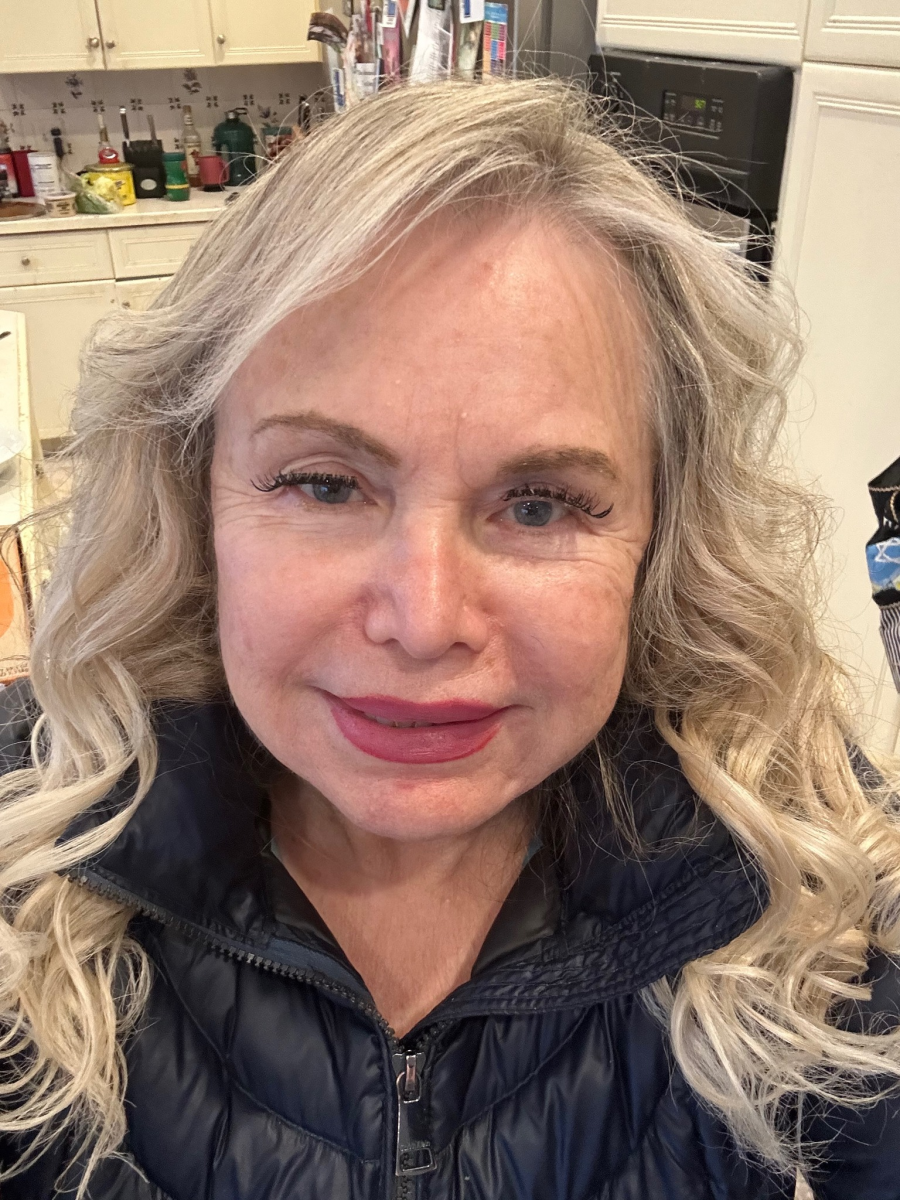
When Frieda Birnbaum's twin boys turned 18 last year, she had every reason to feel vindicated. The woman once mocked as America's 'grannymom' had successfully raised healthy, confident young men who were heading off to university—and at 78, she was still going strong.
It's been nearly two decades since Frieda made headlines around the world for having twins at age 60, becoming the oldest American woman to achieve this milestone.
Critics questioned her motives, predicted disaster, and openly wondered what kind of childhood her boys would have with such an 'elderly' mother.
Today, with Jaret heading to Northeastern University and Josh attending Stevens Institute of Technology in New Jersey, those predictions have proven spectacularly wrong.
A story that resonates across borders
Frieda's journey offers fascinating insights for Australian families, particularly given our own changing demographics around motherhood. Australia's median age for mothers has risen to 31.9 years, with women aged 30 to 34 years having the highest fertility rates, and the average age of mothers increasing from 30.0 in 2010 to 31.2 in 2022.
'The doubters, the critics were all wrong because these sons of mine have kept me invigorated. Raising them has been so easy.'
More striking still, the proportion of first-time Australian mothers who are 40+ years has increased from 2.8 per cent to 3.2 per cent in just one year to 2022—more growth than in the previous decade. While Frieda's situation was extreme, her story touches on broader questions about age, motherhood, and societal expectations that many Australian families are navigating.
When healthcare systems say no
Perhaps the most telling aspect of Frieda's story is what it reveals about different healthcare systems. Unable to find American doctors willing to treat her due to age restrictions, she travelled to South Africa for IVF treatment, reportedly paying around $3,000—a fraction of typical Australian costs.
IVF age limits: Australia vs the world
Australia: Most clinics stop at 50-51 years; Victoria's public system caps at 51 for donor eggs
South Africa: More flexible age limits (where Frieda was treated)
Cost comparison: Frieda paid ~$3,000 in South Africa vs $15,000-30,000+ typical Australian IVF cycles
Medicare: Bulk billing for IVF typically ends at 45 years in Australia
Australia has no national legislation imposing a maximum age for IVF, though guidelines in states like South Australia recommend 50 years as the maximum age, while some fertility clinics don't normally treat women beyond their 50th year, and Victoria's public fertility system requires patients to be under 51 years for donor egg treatment.
The contrast highlights how healthcare policies can shape reproductive choices—and how determined individuals sometimes seek alternatives abroad.
The energy paradox
One of Frieda's most compelling claims has been that raising children in her 60s and 70s was easier than in her 20s and 30s. This wasn't just about having more resources or patience—she insists she had more physical energy too.
Did you know?
Did you know?
Research suggests children born to older mothers may have better long-term health and educational outcomes, with studies showing kids born to mothers over 30, and even over 40, tend to perform better academically and have fewer health issues than previously thought.
'I remember wondering, 'Is this all there is?'' she recalls about her earlier motherhood experience. By the time she had her youngest children, she'd completed her PhD, established her psychology practice, and developed a strong sense of self beyond motherhood.
This resonates with many Australian women who are choosing to have children later. The proportion of women having their first child at 30+ years has more than doubled from 23 per cent to 54 per cent in recent decades, often after establishing careers and achieving financial stability.
Lessons in late-life reinvention
Now 78 and facing an empty nest, Frieda isn't slowing down. She's writing a memoir, continuing her psychology practice, and dreams of hosting her own television show. Her approach to aging offers practical wisdom for Australian seniors facing their own transitions.
Frieda's philosophy for later life
- Don't retire from purpose—evolve it
- Physical and mental energy can increase with fulfilment
- Challenge age-based expectations others put on you
- Reinvention is possible at any stage
- Children thrive when parents are fulfilled and engaged
Her message that 'life begins at any age you want it to' extends far beyond having babies later in life. It's about refusing to be defined by chronological age, whether that means starting new careers, moving to new places, or pursuing long-delayed dreams.
The Australian context
While few Australian women would follow Frieda's exact path, her story illuminates broader issues about aging, choice, and societal expectations that are particularly relevant here.
Australia has seen a decrease in teenage mothers (from 3.8 per cent in 2010 to 1.6 per cent in 2022) and an increase in mothers aged 40 and over (from 4.1 per cent in 2001 to 4.9 per cent in 2022).
This shift reflects changing social and economic realities—from the need to establish careers and financial security to improved healthcare and changing attitudes about what constitutes an 'appropriate' age for major life decisions.
The health considerations are real, of course. Pregnancy complications increase with age, including higher risks of miscarriage, chromosomal abnormalities from age 35, and complications such as gestational diabetes, placenta praevia, and caesarean sections being more common among older mothers.
These factors make Frieda's positive outcome more remarkable, though certainly not something to replicate without extensive medical consultation.
Beyond the controversy
What's perhaps most striking about Frieda's story isn't the age at which she had children, but how she's approached aging itself. Rather than accepting society's script about what people her age 'should' be doing, she's continued evolving, growing, and pursuing new goals.
Her psychology practice, built on helping women find fulfilment beyond traditional roles, reflects her core belief that women need their own sense of purpose to be truly supportive partners and parents. This wisdom applies regardless of when someone becomes a parent—or whether they become one at all.
The criticism she faced reveals as much about our discomfort with women who refuse to follow conventional timelines as it does about the genuine concerns around older parenthood. Why, she asked reporters, is having children later seen as virility in men but madness in women?
What comes next
At 78, Frieda's television ambitions might seem unlikely to some, but her track record suggests otherwise. She's already proven that age-based assumptions are often wrong, that energy can come from purpose rather than youth, and that reinvention is possible at any stage.
For Australian seniors contemplating their own next chapters—whether that's after retirement, becoming empty nesters, or facing other major life transitions—her approach offers a compelling alternative to conventional expectations.
The key isn't necessarily having babies at 60, but rather refusing to let age define your possibilities. Whether it's returning to study, starting new ventures, or simply maintaining the mindset that your best chapters might still be ahead, Frieda's story suggests that our preconceptions about aging may be more limiting than age itself.
What This Means For You
Her twins are now adults, healthy and well-adjusted, preparing for their own life adventures. The critics who predicted disaster have been proven wrong. And at 78, their mother is planning her next act—still pushing boundaries, still challenging expectations, and still proving that life can begin at any age you choose.
Health disclaimer: This article discusses late-life pregnancy for informational purposes only. Anyone considering pregnancy at advanced maternal age should consult with healthcare providers about individual risks and circumstances. The experiences described are not typical outcomes and should not be considered medical advice.
What do you think about Frieda's approach to aging and reinvention? Have you found yourself challenging age-based expectations in your own life? Share your thoughts and experiences in the comments below.
Original Article
https://www.dailymail.co.uk/news/article-15010541/americas-oldest-mom-twins-frieda-birnbaum.html
Australia's mothers and babies, Key statistics and trends—Australian Institute of Health and Welfare
Cited text:
Excerpt: Australia's median age for mothers has risen to 31.9 years, with women aged 30 to 34 years having the highest fertility rates, and the average age of mothers increasing from 30.0 in 2010 to 31.2 in 2022
https://www.aihw.gov.au/reports/mot...overview-and-demographics/state-and-territory
Australia's mothers and babies, Summary—Australian Institute of Health and Welfare
Cited text: The AIHW is working with the jurisdictions to investigate these trends and clarify the drivers for these changes.
Excerpt: Australia's median age for mothers has risen to 31.9 years, with women aged 30 to 34 years having the highest fertility rates, and the average age of mothers increasing from 30.0 in 2010 to 31.2 in 2022
https://www.aihw.gov.au/reports/mothers-babies/australias-mothers-babies/contents/summary
Australia Fertility Rate (1950-2025)
Cited text:
Excerpt: Australia's median age for mothers has risen to 31.9 years, with women aged 30 to 34 years having the highest fertility rates, and the average age of mothers increasing from 30.0 in 2010 to 31.2 in 2022
https://www.macrotrends.net/global-metrics/countries/aus/australia/fertility-rate
Australia Birth Rate (1950-2025)
Cited text: Australia birth rate for 2024 was 11.94, a 10.55 per cent increase from 2023.
Excerpt: the proportion of first-time Australian mothers who are 40+ years has increased from 2.8 per cent to 3.2 per cent in just one year to 2022—more growth than in the previous decade
https://www.macrotrends.net/global-metrics/countries/aus/australia/birth-rate
Australia Birth Rate (1950-2025)
Cited text: Crude birth rate indicates the number of live births occurring during the year, per 1,000 ...
Excerpt: the proportion of first-time Australian mothers who are 40+ years has increased from 2.8 per cent to 3.2 per cent in just one year to 2022—more growth than in the previous decade
https://www.macrotrends.net/global-metrics/countries/aus/australia/birth-rate
IVF treatment for older women: is age the greatest concern?
Cited text: There’s no national legislation imposing a maximum age for IVF in Australia, and doctors are divided over whether there should be an age limit. Guidel...
Excerpt: Australia has no national legislation imposing a maximum age for IVF, though guidelines in states like South Australia recommend 50 years as the maximum age, while some fertility clinics don't normally treat women beyond their 50th year,…
https://theconversation.com/ivf-treatment-for-older-women-is-age-the-greatest-concern-4141
Age and Infertility | Factsheet
Cited text: While some fertility clinics have achieved pregnancies for women in their 50s, 60s and 70s, and Life Fertility Clinic does consider each situation car...
Excerpt: Australia has no national legislation imposing a maximum age for IVF, though guidelines in states like South Australia recommend 50 years as the maximum age, while some fertility clinics don't normally treat women beyond their 50th year,…
https://www.lifefertility.com.au/resources/factsheets/age-and-infertility/
Public Fertility Care | The Royal Women's Hospital
Cited text: To be eligible for the service, you will need to: · be a Victorian resident who holds a Medicare card · have a referral from a GP or specialist whic...
Excerpt: Australia has no national legislation imposing a maximum age for IVF, though guidelines in states like South Australia recommend 50 years as the maximum age, while some fertility clinics don't normally treat women beyond their 50th year,…
https://www.thewomens.org.au/patien.../fertility-genetics/public-fertility-services
Australia Birth Rate (1950-2025)
Cited text: Australia birth rate for 2023 was 10.80, a 6.9 per cent decline from 2022.
Excerpt: The proportion of women having their first child at 30+ years has more than doubled from 23 per cent to 54 per cent
https://www.macrotrends.net/global-metrics/countries/aus/australia/birth-rate
Age and fertility
Cited text: The risk of pregnancy complications increases with age too. The risk of miscarriage and chromosomal abnormalities in the fetus increase from age 35. C...
Excerpt: Pregnancy complications increase with age, including higher risks of miscarriage, chromosomal abnormalities from age 35, and complications such as gestational diabetes, placenta praevia, and caesarean sections being more common among older…
https://www.betterhealth.vic.gov.au/health/conditionsandtreatments/age-and-fertility







